Signage design goes back to petroglyphs. For virtually all of human history, we have been making signs of one kind or another. Directional signs or wayfinding signs so that we know where a good clutch of berries can be found, or to stay out of a large predator’s way. We use signs to indicate that we have things to sell like gourd bowls or wheels, or books or slinkies or space pens. Signs to communicate, signs to demonstrate, signs to lift us up, and signs to give us important information, have been an essential part of the human experience for millennia.
Paleoclimatologists have dated signs to possibly up to 15,000 years old (and definitely older than 10,000 years old) in the United States. The oldest signs to be dated back that far were actually discovered fairly recently, in 2003, at the Pyramid Lakes Indian Reservation in Nevada. To be clear, the petroglyphs had been spotted long before 2003. In 2003, however, paleoclimatologist Larry Benson was able to sample parts of the rocks to determine how old they were. He hypothesized that they were at least 11,000 years old due to the presence of a white coating that he found on the glyphs, some of which were carved nearly an inch deep into the rocks. The coating indicated that the rocks had been submerged in water, and Benson knew that the last time the area had been submerged was about 10,300 years ago. The ancient Indian tribes of the area had arrived some 14,000 years ago.
The graphics used in the petroglyphs depicted geometric patterns, concentric circles, and shapes that resembled trees. Scholars who have studied the tribes and their remains in this area have not shown any other indication of tribal artwork. These signs are the closest things to art that were created by ancient cultures. This demonstrates the importance of signage to human beings. Being able to communicate, in a fairly universal fashion, not to go to a certain area or where to go to find food, is crucial to the success of civilizations. Signs are essential to who we are.

The word “sign” originates in the French word enseigne, which comes from the Latin insignia. Ancient Romans made sign boards from stone or terracotta and used them to mark military regiments, as well as religious symbols and symbols to represent where one could buy food or general wares. These signs were generally heavy and plain, but did an effective job of broadcasting their message.
Signage is widely legislated in America today, and that has its roots in 1389 with King Richard II of England. The first law concerning signs that was ever enacted was in regards to tavern owners erecting signs outside of their businesses. It was of such vital importance that the King stipulated that tavern owners who were non-compliant were required to “forfeit their ale”. (Which, of course, begs the question: who got to keep the forfeited ale? Perhaps it was such an extraordinary punishment that it never had to be enforced.)
It makes sense, if you’re running around in a medieval frenzy looking desperately for a place to drown your sorrows (which, in the Middle Ages, were many), you’d want it to be pretty clear where you could go in order to quaff a pint. One must also consider that it was important to the shops and residences surrounding the tavern, so that emotional and possibly unstable patrons didn’t come crashing through the doors of the Smithson’s home or the local flax and needle shop trying to find a pour.
More legislation swiftly followed, which is what usually happens when you start passing laws. Early tavern signs were very ornate, very elaborate, and their purpose was to tell people about the type and quality of alcoholic beverages provided by the establishment. It was very important that this be done, because all available drinking water was of very poor quality and highly contaminated with all kinds of viruses and parasites that could harm or kill people. Ale was a necessary substitute. The first recorded legislation regarding the placement and size of advertising signs was in France in 1761. The laws regulated the size of the sign and the distance it could extend above the street. England soon followed suit and passed similar legislation between 1762 and 1773 that required sign boards to be fixed flat against the wall. These laws impacted changes that we still see today, as the use of signs were regulated businesses began to use numbers and street names to inform the public of their location.
Since most of the population was illiterate, signs in the Middle Ages relied heavily on graphics to convey the business owners’ messages. In fact, evidence of graphic signs dates back to the ashes of Pompeii (AD 79) wherein merchants such as bakers used graphics to signal the goods and services they offered. The Middle Ages actually saw a huge boon in the creation of signs with businesses beginning to use bright colors and ornaments to promote their products or services. Signs used for marketing and advertising were so important that business owners had competitions to determine who could create the most elaborate, decorative signs. This tradition continues on today with sign competitions held by the International Sign Association.
Signage continued to develop in complexity and sophistication through the Middle Ages and into the modern era. Then came the advancement of newspapers, catalogues, and fliers, which brought advertising directly — and disposable— into the hands of the masses. At the same time, advancements in electricity and gas lighting technologies further expanded signs’ reach and the types of signs available. As the public emerged from the Great Depression and World War II, eager to spend their newfound wealth, clutches of signs advertising where they should spend their cash drew them hither and yon.
Further advancements in plastics and material production enabled the mass production of signs. This made signage affordable for businesses, and their use spread all over the country. The motion picture industry was a particularly strong player in the development of signage in modern America. The proliferation of the nickelodeon as a popular distraction was a perfect place for products and services to be placed right under the noses of consumers. Additionally, movie theatres were a logical place for point-of-sale advertising to start to bloom. Now you were reading an advertisement for toothpaste while selecting your candies to accompany your film.
The first research studies looking into how signs influence consumer behavior began in the 1970s and continue to be an extremely popular means of studying marketing and advertising. Infamously, the Nike swoosh was commissioned by Phil Knight in 1971 from a marketing student named Carolyn Davidson for $34. When the company took off, Knight rewarded Davidson for the logo that would be one of the most recognized in the world with 500 shares of Nike stock and an 18K gold ring bearing the swoosh symbol. Today, Davidson reports that she “lives comfortably”.
Well-placed, well-thought through signage is inspiring. It drives messages home; it can even make people think about things differently. Clever uses of signage including words and images hidden in logos and slogans are everywhere, and signs are poised to become more dynamic and more influential throughout the 21st century and beyond. Advertising is everywhere, and the human brain’s ability to explore abstraction makes the way that signs work a more and more compelling field of study all the time.
Custom sign and graphics shops now cater to a wide variety of clientele and make a number of highly customized signage options available. Custom signage design has become key to integrating the message a business wants to communicate as well as their brand and why they’re the best at what they do effectively. Signs come in a huge variety nowadays but can be loosely grouped as such:
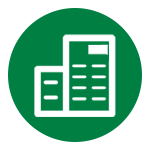
These can include architectural signs, ADA signs, lobby signs, signs on the interior or exterior of the building, property management signs, awnings, canopies and more. Commercial building signage often incorporates electric signs to make sure the public can see your message 24/7.
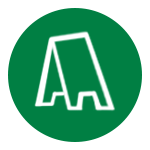
You can increase the visibility of your business substantially by employing a freestanding ground sign. These signs are anchored into the ground on a different location from your business, such as a nearby street corner or the parking lot for your business’ complex. These signs are also generally extremely durable, cost-effective and highly professional in appearance. If you want your business to stand out to your potential customers, a freestanding ground sign is a great choice.
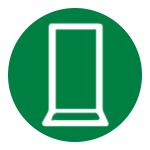
Signs that people can see from a distance, signs that leap out because of their placement (within wallpaper, wrapped around a car, floor graphics), signs that make a dramatic statement: all of these concepts fall into the realm of large format graphics. Large format graphics always make a statement, can be part of many different types of media, and are a fantastic way for your business to stand out.
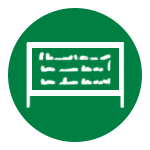
If you want your sign to transmit a fair amount of information without using a whole lot of space, a digital message center may be the right option for you. The LED displays on digital message centers allow you to incorporate graphics as well as whatever messages you would like to display; they are completely customizable. And digital message centers can be a part of freestanding ground signs or other types of signs as well. They’re superb for versatility and accessibility, and for being able to transmit a lot of information to a captive audience all at once.
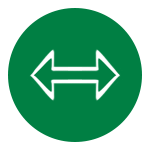
Getting down to the nitty-gritty of what signs are essentially necessary for in this day and age are directional and wayfinding signs. Who hasn’t pulled into a parking lot only to realize they’re going against the flow of traffic, because there was no sign to tell you otherwise? It’s happened to all of us. You can help make it happen less for your customers by investing in directional designs that help them figure out where they’re going and where they need to be.
These are also great indicator signs: indicating the location of a drive-thru, indicating where to go for certain services at a university, hospital, corporate campus, stadium, arena, etc. They can also designate specific areas such as disabled parking spaces or crosswalks or, indoors, restrooms, or to give simple instructions for safety measures (“mind the gap”).
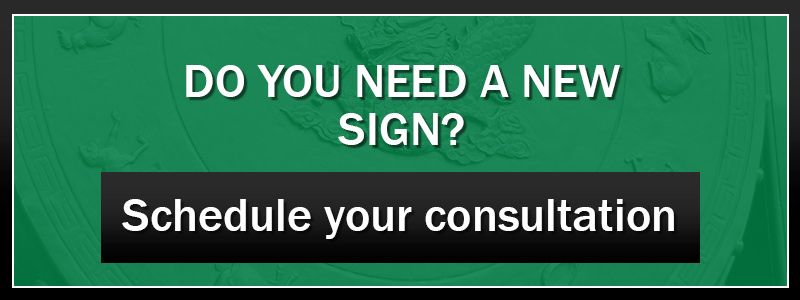
Interior signs are employed for so many uses, it’s probably easier to come up with a list of what they aren’t used for than give all the reasons they are helpful. Interior signs refers to:
Signage indicating which way a door opens
Signage designating specific areas in a bar, restaurant, gym, retail store, etc.
Signage for locating baby changing areas
Signage for customer service areas
Signage that attracts attention to particular features or areas of interest
...and much, much more. Interior signs can incorporate electricity or digital message centers to make them stand out more and transmit a substantial amount of information, and are, of course, entirely customizable.
These are just some of the many types of signs you may find a modern sign company offering these days. The sky is the limit or, rather, the zoning regulations are the limit. Almost anything you can dream up for a sign can be made into a reality.
Sometimes you have a perfectly good sign except for a little bit of damage or wear and tear. Along with the signs themselves, some shops also offer sign repair services. Ssign supply stores can employ specialty professionals such as electricians to work on sign repairs and assist in building new electric signs or troubleshooting tricky problems with electric signs. Oftentimes, there’s no need to replace a perfectly good sign if you can simply repair it.
Some sign shops also offer installation and wholesale sign services for corporate customers, too. They may also offer their services in securing permits and making sure all local regulations are being followed when building or installing a new sign. The last thing you want is to put up a beautiful sign only to get a notice from the city a couple of days later telling you that you need to remove it because of some obscure law you weren’t aware of! Sign supply professionals can assist you in navigating through these areas skillfully and easily.
Many sign supply shops choose to outsource their work. They prefer only to handle the design aspects of the signs or maybe assist with the finishing touches, but they send the bulk of the actual manufacturing of the signs out to larger sign manufacturers, sometimes around the country, and sometimes around the world.
At Priority Signs & Graphics, we take more of a soup-to-nuts or all-in-one approach to the creation of signs in our shop. We’re the place that you’ll come in for the initial consultation, to approve any and all drafts of the sign, and we’re the place that makes the sign onsite. This gives us ultimate control over what happens to our customers’ expectations, right then and there. If something goes wrong or ends up looking unusual or poor when it’s being created, we can stop the process in its tracks and address the mistakes. We’ve found that it’s a lot easier to ensure our customers get top quality signage when we control the process from start to finish.
When you come to pick up your beautiful new sign from Priority Signs & Graphics or when we come out to install it, we know you’ll be happy that you chose to support us instead of the other guys. We make beautiful, durable signs that stand the test of time, and when they get beat up, we can fix them or create new ones for you, too. We offer an all-in-one advantage that many other sign supply companies do not.

There are some incredible developments being made in our industry. Some companies in Europe are pioneering a sign type that is activated when you lean your head against the window on a commuter train. They say that it’s just like hearing the sign as a voice speaking directly to you.
We’re always interested in the signage of the future, and the past, but when it comes down to it, our customers and our business dwell in the present, and that’s where we keep our focus. We continue to manufacture top-quality, attractive, sophisticated signs of any and all varieties. We hope you’ll schedule your consultation soon.
